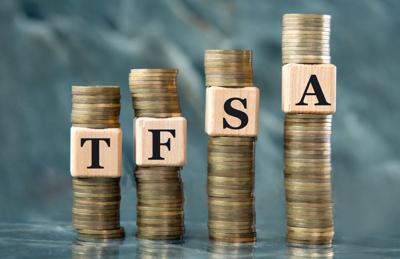Looking for an investment vehicle flexible enough to get your hands on your money quickly?
A tax-free savings account might just be the answer.
But experts warn there are mistakes you need to avoid to steer clear of penalties. 
A common gaffe is accidentally over-contributing to your TFSA, says Jason Heath, managing director at Objective Financial Partners in ╔ź╔ź└▓.
The TFSA annual limit for 2025 is $7,000. If you’ve never contributed to a TFSA before and┬áturned 18 before 2009, you would have a maximum lifetime TFSA contribution of $102,000 as of Jan. 1, 2025.
Over-contributions are subject to a one per cent penalty for every month the excess amount remains in your TFSA.
The CRA tracks your TFSA contributions across institutions and updates your contribution limit in the first few months of every calendar year.
Rising yields on the fixed-income investment are making them more attractive these days as stock
While the CRA had some issues with their TFSA reporting this year, Heath says the agencyÔÇÖs reporting is generally reliable.
ÔÇťBe careful about taking withdrawals and then contributing in the same year, especially using the TFSA like a savings account,ÔÇŁ says Heath.
When you withdraw from your TFSA, you regain your contribution room ÔÇö but not until the following January.
For example, if you withdrew $1,000 from your TFSA in March 2025, that additional $1,000 in contribution room will not be applied to your TFSA until January 2026.
You can also accidentally overcontribute when transferring a TFSA from one financial institution to another, specifically by liquidating the funds and then recontributing them yourself, says Aldo Lopez-Gil, a ╔ź╔ź└▓-based financial adviser with Edward Jones.
While itÔÇÖs true that you can choose what you put in your TFSA ÔÇö ETFs, GICs, stocks, bonds and cash ÔÇö and withdraw it tax-free, there are exceptions.
For instance, U.S. stocks that pay out dividends in your TFSA are typically subject to a 15 per cent non-resident withholding tax, points out Lopez-Gil.
For investors who want to be strategic, Lopez-Gil says itÔÇÖs usually more favourable to hold a U.S. stock in an RRSP, where it wonÔÇÖt be subject to the withholding tax. ┬á
That said, Heath points out that the withholding tax alone isnÔÇÖt a reason to exclude U.S. stocks from your TFSA.
The dividend yield for the S&P 500 is about 1.3 per cent, so a 15 per cent withholding tax amounts to a mere one-third of a per cent, he points out. ÔÇťÔÇŐSometimes thereÔÇÖs a small cost to a potential benefit.ÔÇŁ
One of the main advantages of a TFSA is that any interest, dividends and capital gains earned in your TFSA can grow tax-free.
Sometimes TFSAs are marketed as savings accounts, offering promotional rates to customers, points out Lopez-Gil.
ÔÇťBank-branch advisers are limited to bank-branded mutual funds, GICs or savings accounts as TFSA investments.
A frequent road tripper and financial planner points to credit card offers, loyalty programs and
For this reason, people may miss out on investing the assets in the TFSAs in stocks, bonds and ETFs, which are investment vehicles that tend to have higher growth opportunity.ÔÇŁ
At the same time, be careful about investing in an ÔÇťoverly speculative fashion,ÔÇŁ says Heath. ÔÇťObviously, you want to earn high returns, and a tax-free environment is good for that. But if youÔÇÖre taking risks and you lose money, thatÔÇÖs not good either because you donÔÇÖt get that TFSA room back.ÔÇŁ
ÔÇťIf you lose $10,000 in a TFSA, that $10,000 is gone forever.ÔÇŁ┬á
































To join the conversation set a first and last name in your user profile.
Sign in or register for free to join the Conversation